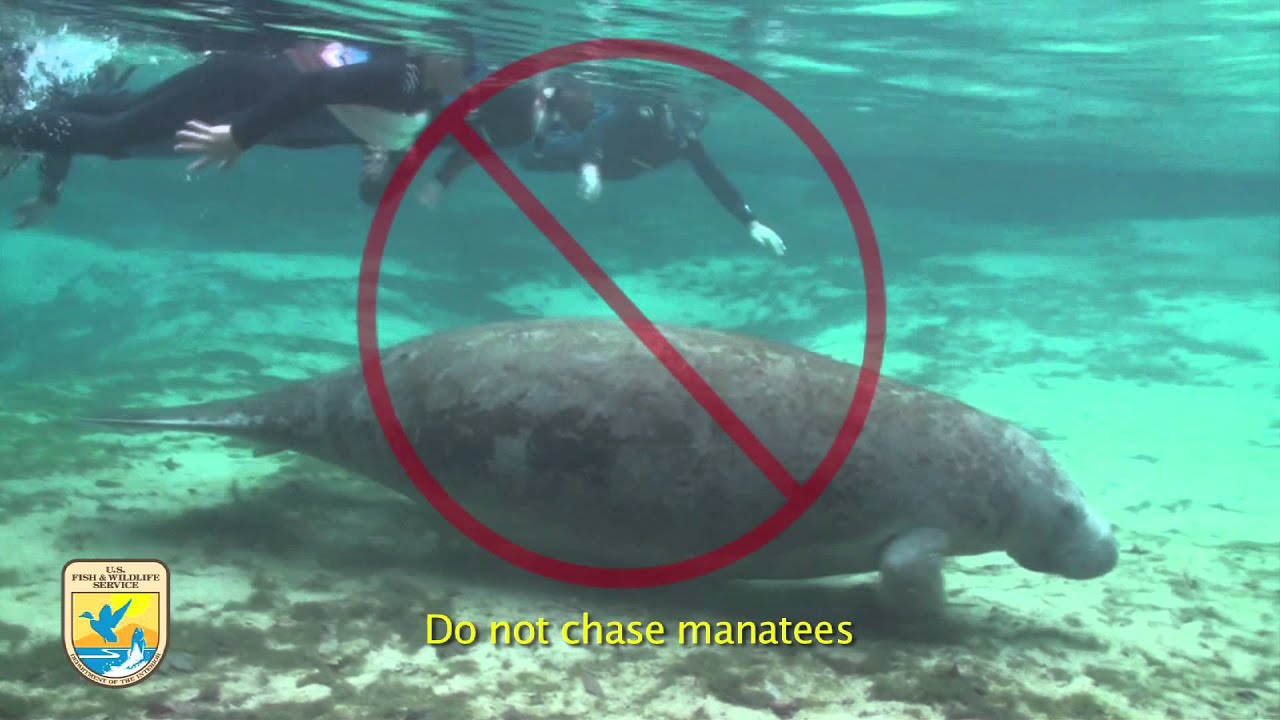Puff … snuffle … sputter. The sound of robust, hearty breaths breaking the water’s surface is a sweet, melodic symphony to any manatee lover’s ears. They had me at the first boisterous exhale.
It seems the more things change in and around Crystal River, Florida, the more the manatees stay the same — except for their climbing numbers. The manatee population in the Kings Bay area is increasing and thriving. Observers are able to view them from beautiful tree-lined boardwalks and also have the unique opportunity to experience them below the water’s surface.
To protect Florida’s state marine mammal, the charismatic manatee, the U.S. Fish and Wildlife Service (FWS) developed regulations for both topside and underwater visitors to follow. The information, rules and photographs collected here will help illustrate the magical encounters, but status, rules and regulations can be modified at any time. (For the most current information, contact the Crystal River National Wildlife Refuge or visit their website at fws.gov/refuge/Crystal_River.)
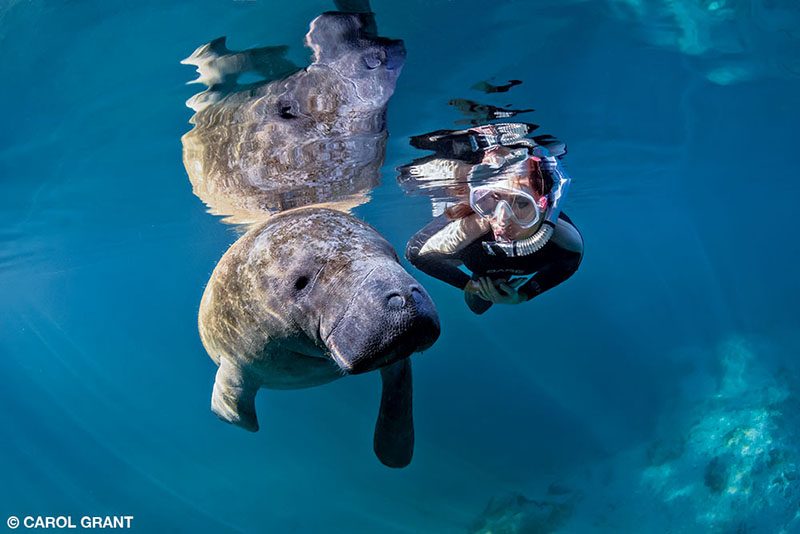
Are you yearning to hear the serenade of manatee exhales and see those soulful black-button eyes up close? For in-water observation your options include a wide array of local boat operators, or private boat rentals are available for those who feel confident about how to quietly anchor and avoid manatees. An informative series of instructional “Manatee Manners” videos is required viewing.
My favorite way to see manatees is from a kayak with no audible motor. Visitors can rent kayaks at many spots around Kings Bay, but be aware that tie-up areas to see manatees are few and can often be crowded. Try to avoid holidays and other busy times. Few things are better than the peaceful experience of gazing at manatee antics underwater and then paddling back, stopping for a moment and noticing dozens of manatees surrounding your kayak, swimming by as they frolic with obvious joie de vivre.
Spring outflow water temperatures typically measure around 72°F near the springhead. On colder Florida winter days (which is the best time to observe large numbers of manatees) the surrounding water can be a couple of degrees cooler, so a 5 mm wetsuit with a hood will keep most people comfortable for more than an hour in the water. Warmth is necessary because fast and jerky movements can startle manatees. A warm and relaxed snorkeler with a well-fitting mask is more likely to experience a once-in-a-lifetime profound encounter.
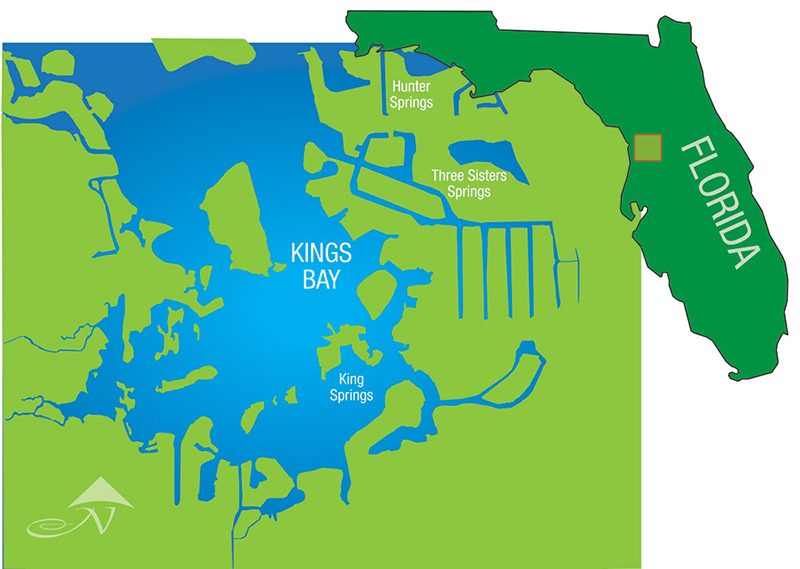
Three Sisters Springs
Three Sisters Springs — composed of the lobes Pretty Sister, Big Sister (or Deep Sister) and Little Sister — combine to form the jewel in the crown of Crystal River. The dramatic rainbow light streaming through the trees illuminates the water running so clear it’s like an underwater dream. Three Sisters, and all the freshwater springs in Kings Bay, are influenced by tide and wind, so water clarity can vary greatly at any of the spring sites throughout the day. Idiot’s Delight 1 and 2, the two springs to the left and right of the entrance to Three Sisters, are often sanctuaries during the manatee season, which runs from Nov. 15 to March 31. Water can be quite clear in these areas. Idiot’s Delight 1, usually the warmest spot in Kings Bay, is the longtime primary manatee sanctuary and is often packed with sea cows. Idiot’s Delight 2 is used as a sanctuary as needed. These sanctuaries are set aside for manatees only with no human entry allowed.
FWS established two additional manatee-only areas inside of Three Sisters in March 2016. Noted as closures with visible underwater markers, the eastern and western lobes known as Pretty Sister and Little Sister are sanctuaries during the winter manatee season. Snorkelers can still observe manatees at Big Sister and other open areas within Three Sisters. While I miss experiencing the areas of Three Sisters Springs that are now set aside for manatees only, the other areas are still lovely, and manatees need space to call their own without human interference.

Three Sisters Springs is open for in-water observation and exploration year-round except for seasonal lobe closures. During manatee season, water is accessible if the Gulf of Mexico water temperatures stay above a specified threshold. The United States Geological Survey (USGS) studied manatee usage of Three Sister Springs, including Idiot’s Delight, and found that one water-temperature-data buoy accurately predicted increased manatee usage. Data from that buoy, which is at the mouth of Crystal River at Shell Island, is now used to open and close swimmer access to Three Sisters. The Shell Island buoy temperature needs to stay above 62.6°F (17°C) for 24 hours before in-water human access is allowed. When the water temperature is below that threshold, snorkelers can remain outside the Three Sisters entrance, where surprising encounters with manatees can still happen as they swim in the clear water near the boundary. (Access USGS temperature data for Shell Island at tinyurl.com/Shell-Island-temps.)
In 2016 FWS implemented a rule eliminating flash photography in the waters of Three Sisters Springs. While this is the only place in Kings Bay where this rule is enforced, it’s best to photograph without strobes throughout the area. In my experience, the other spring areas don’t benefit from external lighting. Other areas such as King Spring and Hunter Springs are more open and prone to particles in the water column, so strobe use there usually creates more problems than it solves. Harness the natural Florida sunlight instead. The creativity and fun of working with natural light might surprise you, and split photographs are much easier without the extra bulk.
Three Sisters Springs Boardwalk
For a different perspective or during an in-water closure of Three Sisters Springs, view the manatees from topside. On some days visitors on the boardwalk can see more than 200 manatees as well as other wildlife in this beautiful setting. A restored wetland area on the property can provide glimpses of alligators, snapping turtles, bobcats and many species of birds, including eastern bluebirds using segmented small spring pools near the bank as their own personal hot tub on a misty cool morning.
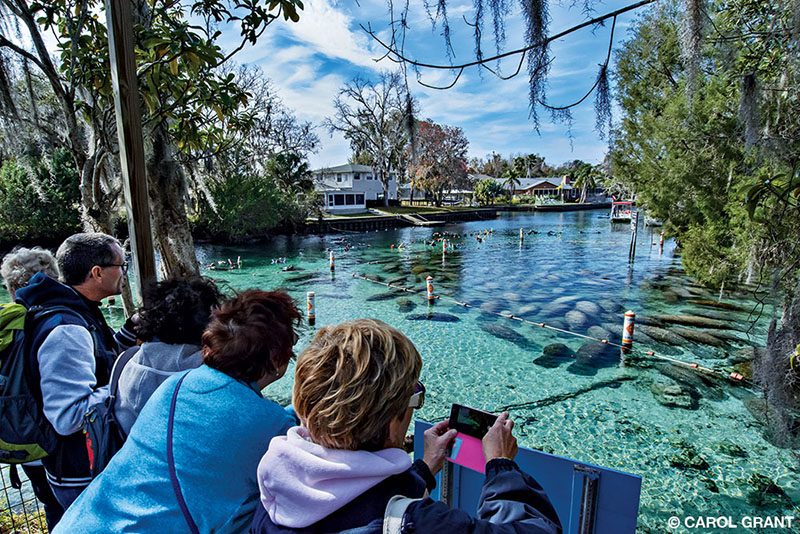
King Spring (Main Spring)
King Spring has remained the same for years and is always a reliable spot to see manatees, some of which can be quite gregarious at this location. Outside water intrusion affects the visibility and makes it challenging to photograph here, but it’s a fantastic place for an up-close in-water manatee encounter.
Hunter Springs
Composed of Jurassic Spring, House Spring and Hunters Cove, Hunter Springs has seen a dramatic improvement in visibility since a restoration effort replanted eelgrass, which has taken hold. Be careful when snorkeling in this area because the bottom substrate is generally mucky, even with the newly rooted eelgrass, so it’s prone to becoming stirred up by manatee and human activity. It’s difficult to control particles in photographs around Hunter Springs, but it’s a great place to float while quietly observing and listening to manatees chomping on the eelgrass, even during the warmer months. Be sure to tow a dive flag when snorkeling if it’s more than 100 feet to your vessel. The recently revamped Hunter Springs Park has a wide boardwalk, playground, large swimming area and beach kayak launching section.
Draw close to the lovely spring water and listen. If you hear a “puff” in the water, see if your heart skips a beat in joyful affection. Perhaps the enchanting manatees will have you in love at first puff, too.
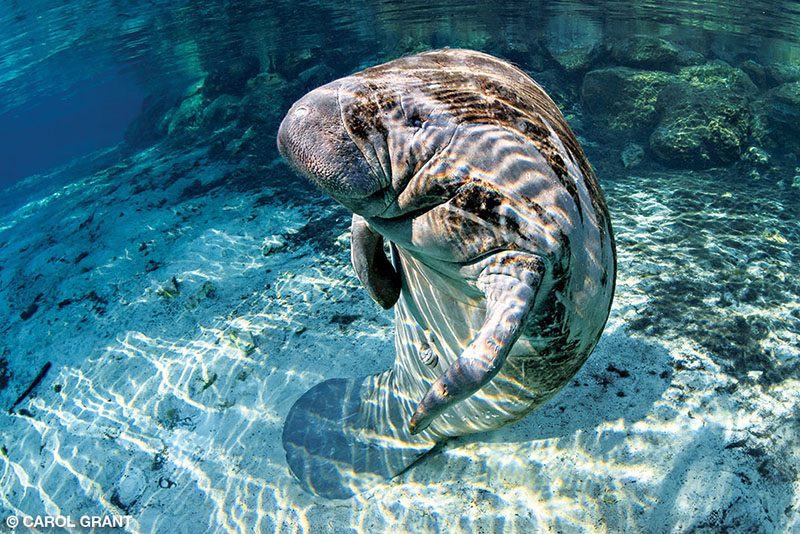
Explore More
Watch this video to learn proper manners to use around manatees.
© Alert Diver — Q2 2019
